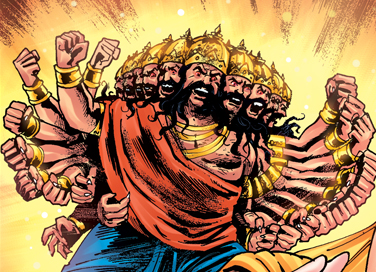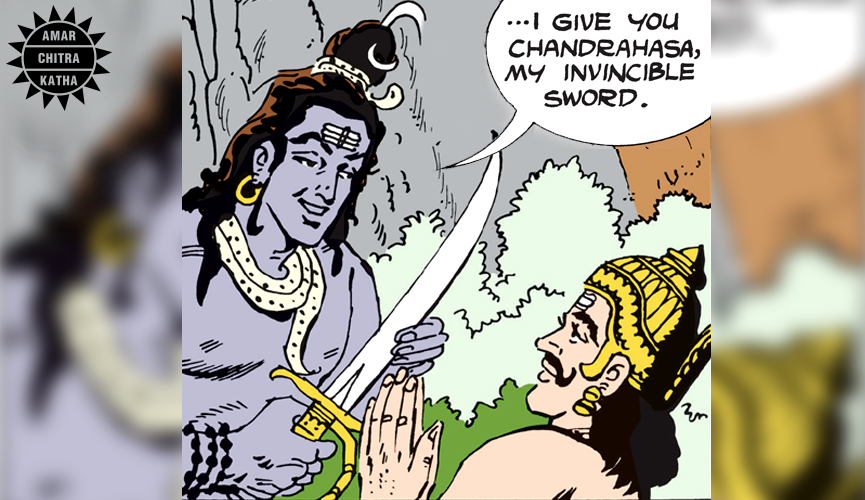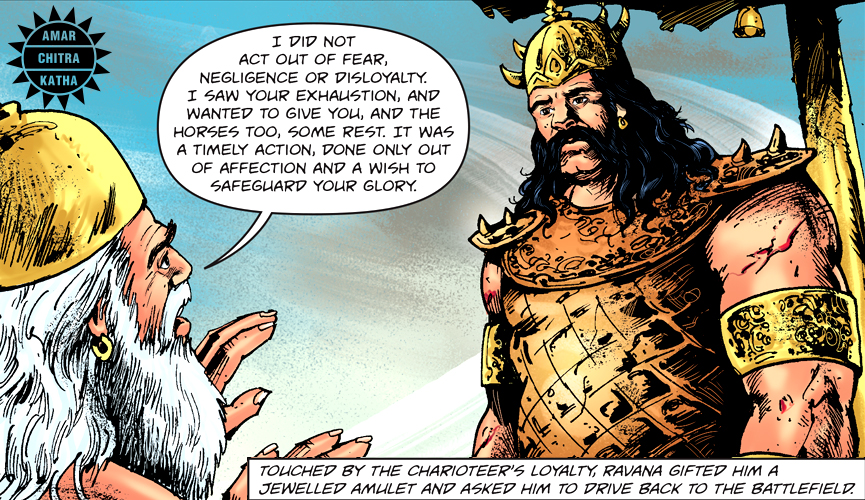9 Lesser-Known Facts About Ravana
- November 13, 2020

9 Lesser-Known Facts About Ravana
- November 13, 2020
By Srinidhi Murthy
Ravana, the ten-headed demon king of Lanka, was one of the central characters of the Ramayana. While many are aware of his end at the hands of Rama, some of his major life events are still unknown to many.
He was originally named Dasagriva, meaning the one with ten heads.
To receive more such stories in your Inbox & WhatsApp, Please share your Email and Mobile number.
While travelling in his pushpaka vimana, a celestial chariot that would always obey its rider, Dasagriva came across Mount Kailasha where Lord Shiva lived with his wife. The pushpaka vimana, however, couldn’t fly past the mighty mountain, and so, the arrogant Dasagriva went on to lift the mountain by himself. As the mountain began to tremble at Dasagriva’s might, Shiva pressed the mountain down with his toe, crushing Dasagriva’s hands. Dasagriva let out a loud scream in agony, earning him the name ‘Ravana’, meaning ‘one who roars or screams’.
Read more such exciting stories on the ACK Comics App today :- Click now

Humbled by Shiva, Ravana became one of his greatest devotees, composing hymns in praise of the Destroyer, under the Kailasha mountain. Pleased by his devotion, Lord Shiva presented him with an invincible sword called the Chandrahasa.
Apart from the mighty Rama, Ravana was also defeated by two other kings. One was the monkey king, Vali, and the other was Kartaveerya Arjuna, the king of Mahishmati also known as the one with a thousand arms. Both incidents taught Ravana to be more humble.
Ravana was a master in all forms of the Angampora martial art and was the most feared Angam warrior of all time.
Ravana’s grandfather was Sage Pulastya, who was one of the ten mind-born sons of Brahma. Thus, in a way, Ravana was the great-grandson of Brahma himself.
According to Valmiki’s Ramayana, Ravana was told about Rama by the rakshasa named Akampana He was the lone survivor of a battle in which Rama killed Ravana’s 14,000 rakshasas in 48 minutes, including his cousins, Khara and Dushana. To avenge his loss, Ravana approached his rakshasa friend, Maricha, with the plan of abducting Sita to weaken Rama, but Maricha disagreed. Ravana took his friend’s advice and listened to reason. However, when his sister Surpanaka approached him with her broken nose, Ravana decided to go with his former plan ignoring the pleas of Maricha.
The epic stories of Indian Gods and Goddesses beautifully illustrated in Epics and Mythology Collection: Buy Now
Ravana gave a one-year ultimatum to Sita advising her to change her mind and accept him as her suitor. He also threatened to kill her if she refused him at the end of the year.

In the final battle between Rama and Ravana, Ravana’s charioteer noticed that his king was exhausted due to the ongoing duel. In a bid to give his master some reprieve, he drove the chariot away from the battlefield. Ravana was furious at the charioteer for making him look like a coward, running away from the battle. The charioteer calmly stated that he just wanted Ravana to recuperate before getting back into the action fully energised, assuring his loyalty to the lord of Lanka. Touched by the words of his charioteer, Ravana presented him with a jewelled amulet and ordered to be taken back to the battlefield.
Read more such exciting stories on the ACK Comics App today :- Click now
To receive more such stories in your Inbox & WhatsApp, Please share your Email and Mobile number.

Comic of The Month
The Naval Journey of India Book I
This book is the first of a three-book series that takes a deep and detailed look at India's Naval History and a deep insight into the lives of our men and women in white. But any series on the Indian Navy has to start at the very beginning - exploring India's celebrated maritime history. Join our little hero, Bharat, and his grandfather, Commodore Sagar, as they sail into the deep blue waters of time. Book I of The Naval Journey of India takes a sweeping look at India's maritime endeavours, how the seas impacted us over millennia and how the oceans made us who we are.